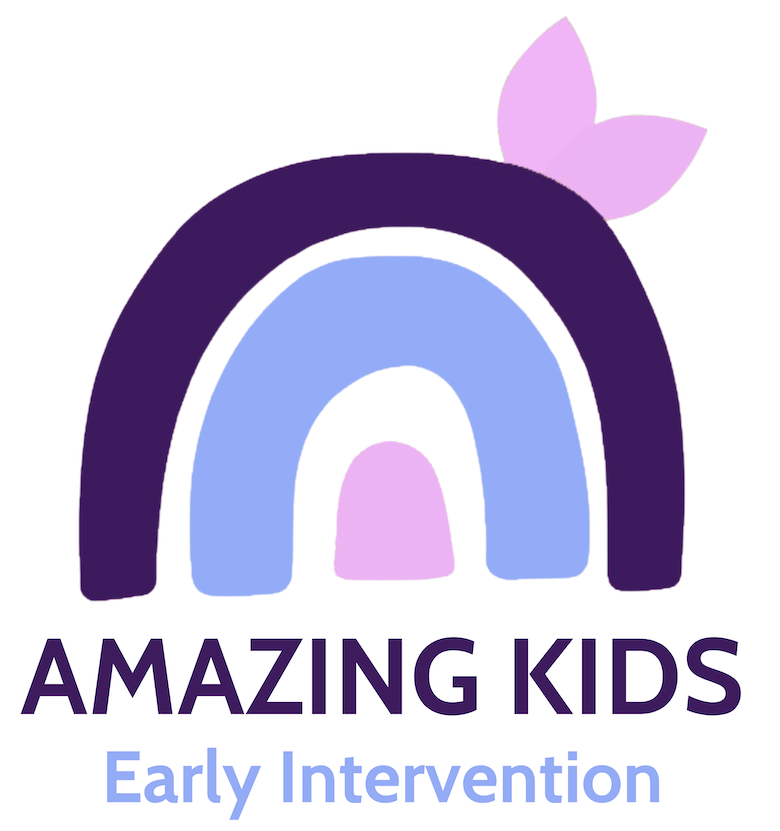Sensory experiences are an integral part of our world, shaping how we perceive, understand, and interact with our environment. However, for children with autism, processing and responding to sensory input may present unique challenges, as they often experience sensory sensitivities and difficulties that can impact their daily functioning and quality of life. As an ESDM early intervention provider, Amazing Kids recognises the importance of supporting autistic children’s sensory needs, aiming to deliver evidence-based, individualised services that help maximise their development and overall well-being in Melbourne.
In this blog, we will explore the concept of sensory-friendly environments and their impact on enhancing engagement, learning, and comfort for autistic children under five. We will discuss strategies and practical tips for parents and potential therapists to create spaces that accommodate sensory sensitivities, mitigate potential challenges, and foster a supportive atmosphere for children’s growth and development. Furthermore, we will examine the role of Amazing Kids therapists in guiding families and incorporating the principles of sensory-friendly environments into their ESDM strategies, ensuring the best possible outcomes for the children they support.
By focusing on intent-driven topics, we aim to provide insightful and relevant content that resonates with parents of young autistic children and potential therapists keen to learn more about addressing sensory needs. This blog will highlight the importance of creating sensory-friendly environments and offer practical guidance on how to implement these principles in the lives of autistic children, aligning with the compassionate and supportive approach used by Amazing Kids.
1. Understanding Sensory Processing Differences in Autistic Children
Before delving into strategies for creating sensory-friendly environments, it’s essential to understand the unique sensory processing experiences often faced by autistic children:
- Sensory sensitivity: Autistic children may be hypersensitive to certain sensory stimuli, such as loud noises, bright lights, or particular textures and smells, leading to distress or discomfort.
- Sensory-seeking behaviours: Some children may crave sensory input, engaging in repetitive actions or seeking out specific sensory experiences.
- Sensory filtering difficulties: Autistic children may struggle to filter or prioritise sensory information, making it difficult to focus or attend to critical tasks in their environment.
A sensory-friendly environment addresses these processing differences, fostering a supportive space for children to feel comfortable and engaged in their daily activities.
2. Key Tips for Creating a Sensory-Friendly Home Environment
Parents can take several steps to create sensory-friendly spaces within their home, accommodating their child’s unique sensory needs:
- Reduce environmental stressors: Minimise exposure to overwhelming sensory stimuli by employing measures such as installing dimmable lighting, reducing background noise, and creating quiet spaces for retreat and relaxation.
- Provide sensory breaks: Offer designated spaces or “safe zones” where your child can take breaks from sensory input and self-regulate when feeling overwhelmed.
- Integrate calming sensory input: Offer opportunities for calming sensory experiences, such as weighted blankets, soft fabrics, or soothing visual or auditory elements.
- Encourage sensory exploration: Provide opportunities for children to engage with various textures, smells, and sounds in a safe and controlled environment.
3. Adapting Therapy Settings to Support Sensory Needs
Therapists can also implement sensory-friendly principles in their settings, promoting a comfortable and effective therapy experience for autistic children:
- Develop individualised strategies: Assess each child’s unique sensory needs, adapting the therapy environment to account for their specific sensitivities or sensory-seeking behaviours.
- Foster predictability: Create consistent routines and visual schedules to minimise anxiety and confusion caused by unexpected sensory experiences.
- Encourage self-regulation: Teach children coping strategies for sensory overwhelm, such as deep pressure or calming breathing techniques.
- Collaborate with parents: Share sensory strategies and guidance with families, ensuring a bridge of support that extends beyond the therapy setting.
4. The Role of Amazing Kids Therapists in Creating Sensory-Friendly Environments
Amazing Kids therapists use the ESDM principles to integrate sensory-friendly strategies into their intervention approach, fostering the best possible outcomes for the children they support:
- Tailor therapy plans: Develop individualised therapy plans considering each child’s sensory needs, providing an optimal foundation for engagement and learning.
- Implement sensory adaptations: Adapt therapy settings based on the child’s unique sensory profile, ensuring a comfortable and supportive atmosphere.
- Empower families: Offer guidance and resources to parents, enabling them to create sensory-friendly environments in their own homes.
- Evaluate progress: Monitor a child’s response to sensory adaptations and adjustments, refining strategies when necessary to continue promoting their well-being and development.
Conclusion:
Creating a sensory-friendly environment for autistic children is an incredibly impactful way for parents and therapists to promote their comfort, engagement, and overall quality of life. By understanding the unique sensory needs of these children and implementing targeted strategies, supportive environments can be established both at home and in therapy settings. Amazing Kids autism therapists play a vital role in incorporating these principles into their ESDM approach, empowering families and children to thrive as they navigate a world full of sensory challenges. With an effective sensory-friendly environment, young autistic children are positioned to unleash their full potential and experience a world tailored to their needs.
